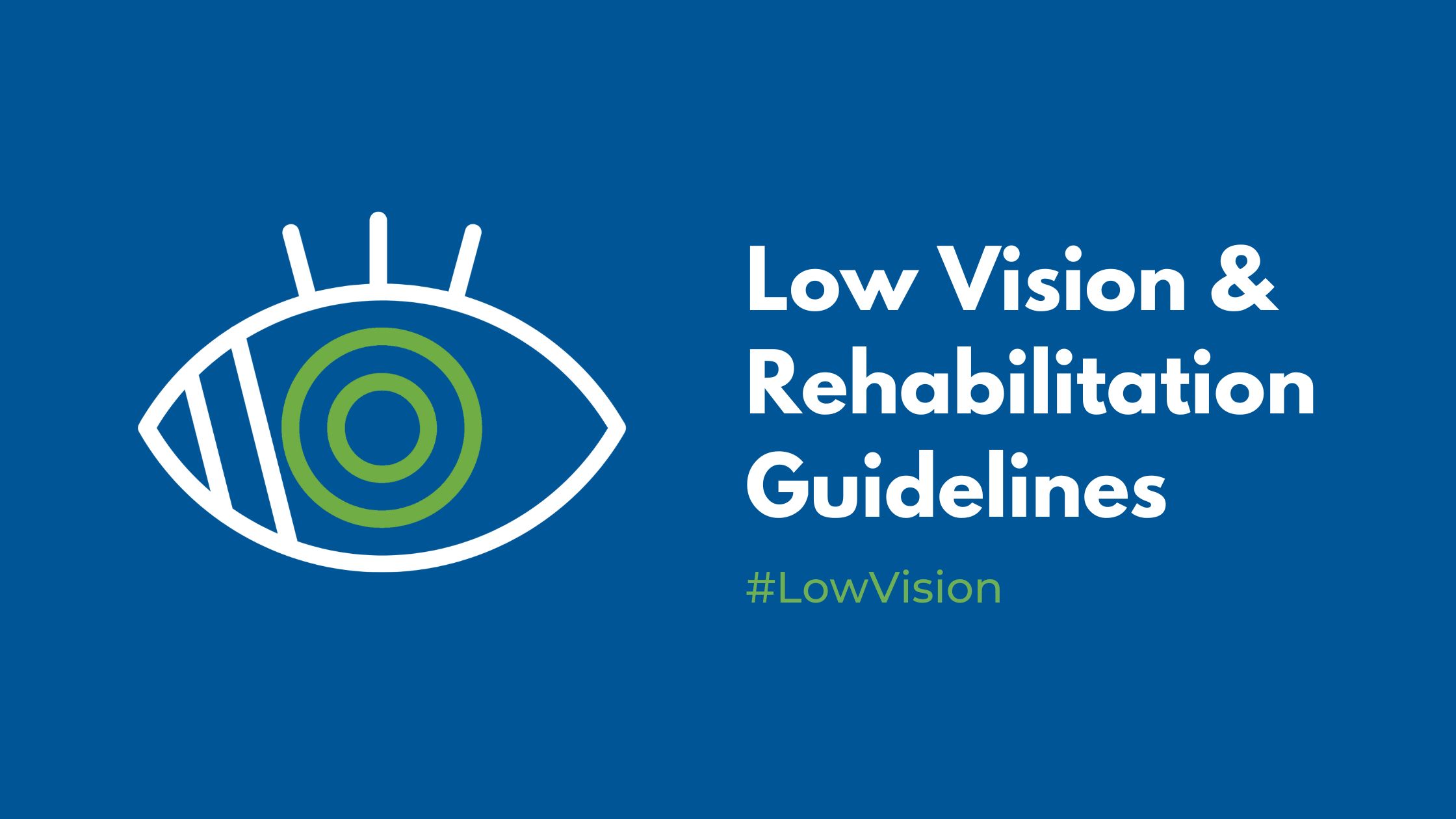
February is Low Vision and Vision Rehabilitation Awareness Month. Low vision refers to uncorrectable reduced vision that persists despite corrective glasses, lenses, medications, or surgery. This impaired vision interferes with a person’s functional independence in performing daily activities, and often leaves patients feeling helpless and hopeless about how to improve their function and quality of life.
Thankfully for our low vision patients, visual rehabilitation services are now the standard of care in low vision management, and are performed by a multidisciplinary team of specialists with the intent in providing holistic vision care. The goal of visual rehabilitation is to help patients make the most of their remaining vision in efforts to restore function after vision loss and help improve their overall health, quality of life, and independence.
In this article, we will take a closer look at the various clinical practice guidelines related to eye health, low vision, and visual rehabilitation to honor Low Vision Awareness Month 2023.
Comprehensive Eye/Vision Examination Guidelines
- Vision Rehabilitation
- Society: American Academy of Ophthalmology (AAO)
- Published Date: December 2022
- Pediatric Eye Evaluations
- Society: American Academy of Ophthalmology (AAO)
- Published Date: December 2022
- Comprehensive Adult Medical Eye Evaluation Preferred Practice Pattern
- Society: American Academy of Ophthalmology (AAO)
- Published Date: November 2020
Disease/Disorder-Specific Eye/Vision Considerations Guidelines
- Age-Related Macular Degeneration
- Society: American Academy of Ophthalmology (AAO)
- Published Date: January 2020
- Cataracts in the Adult Eye
- Society: American Academy of Ophthalmology (AAO)
- Published Date: November 2021
- Clinical Assessment of Patients with Inherited Retinal Degenerations
- Society: American Academy of Ophthalmology (AAO)
- Published Date: November 2021
- Diabetes Standards of Care 2023
- Society: American Diabetes Association (ADA)
- Published Date: December 2022
- Diabetic Retinopathy
- Society: American Academy of Ophthalmology (AAO)
- Published Date: January 2020
- Vision and Concussion: Symptoms, Signs, Evaluation, and Treatment
- Society: American Academy of Pediatrics (AAP)
- Published Date: July 2022
Surgically-Relevant Eye/Vision Interventions or Complications Guidelines
- Refractive Surgery
- Society: American Academy of Ophthalmology (AAO)
- Published Date: December 2022
- Refractive Errors and Refractive Surgery
- Society: American Academy of Ophthalmology (AAO)
- Published Date: November 2017
- Eyelid Surgery for Upper Visual Field Improvement
- Society: American Society of Plastic Surgeons (ASPS)
- Published Date: August 2022
- Perioperative Visual Loss Associated with Spine Surgery
- Society: American Society of Anesthesiologists (ASA)
- Published Date: January 2019
Currently, 4.2 million Americans ages 40 and older are visually impaired. Of these, 3 million have low vision. There are multiple potential etiologies for low vision, including specific eye diseases, like diabetic retinopathy, glaucoma, and macular degeneration, as well as trauma, strokes, and/or other medical comorbidities like diabetes and certain genetic disorders. But regardless of etiology, with the support of a multidisciplinary team of specialists, visual rehabilitation acts as a vital asset in helping our patients adjust to living with vision loss and should be considered a key part of a patient’s overall care.
Copyright © 2023 Guideline Central, All rights reserved.